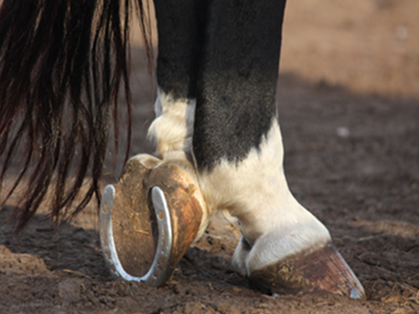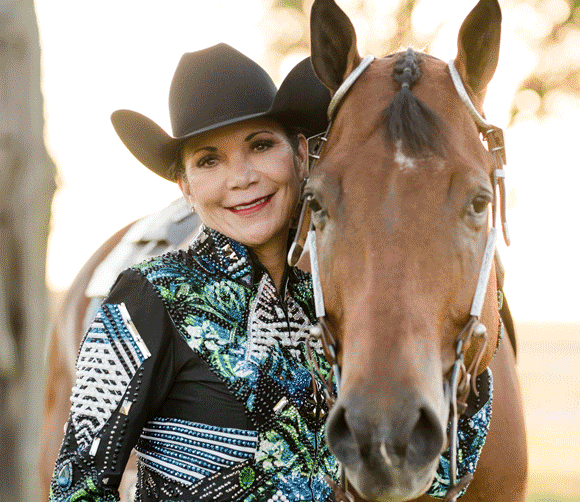Shift in Understanding Equine Laminitis
 The Directors and Advisors of the nonprofit Equine Cushing’s and Insulin Resistance (ECIR) Group Inc. (www.ecirhorse.org), recently expressed their appreciation to the authors for their invited review, Paradigm Shifts in Understanding Equine Laminitis (Patterson-Kane, et al., The Veterinary Journal, 2018)
The Directors and Advisors of the nonprofit Equine Cushing’s and Insulin Resistance (ECIR) Group Inc. (www.ecirhorse.org), recently expressed their appreciation to the authors for their invited review, Paradigm Shifts in Understanding Equine Laminitis (Patterson-Kane, et al., The Veterinary Journal, 2018)
This long-needed review provides information that will advance understanding for veterinary professionals, farriers, and horse owners in their quest to find the most effective protocols for early recognition, treatment, and the health of metabolic equines.
Since 1999, The ECIR Group has made observations based on thousands of case histories provided by members. These include:
- The benefit of soaking hay to reduce sugar. (ECIR Group archives 2002)
- The understanding that insulin, not fructan, was the risk factor for laminitis. (ECIR Group archives 2001)
- The ECIR Protocol, Diagnosis, Diet, Trim and Exercise (DDT/E) came from appreciating the importance of DIAGNOSIS, because laminitis is not the primary disease. (ECIR Group archives 2005)
- Case histories documented the insidious nature of laminitis associated with insulin resistance. (ECIR Group archives 2001)
- The importance of limiting simple sugars and starch to limit hyperinsulinemia (ECIR Group archives 2000)
- The irrelevance of the measure “NSC” (non-structural carbohydrates), which includes fructan, a plant- storage carbohydrate that plays no role in the glycemic response. (ECIR Group archives 2007)
- The fact that cortisol is not involved in the development of Insulin Resistance or PPID. (ECIR Group archives 2001)
- Most importantly that the great majority of laminitis cases are caused by hyperinsulinemia associated with endocrinopathic disease. (ECIR Group archives 2001)
 The ECIR Group has continued to communicate these messages through the ECIR Group outreach forum, website, social media and other public relations effort, and the NO! Laminitis Conferences (2011, 2013, 2015, 2017).
The ECIR Group has continued to communicate these messages through the ECIR Group outreach forum, website, social media and other public relations effort, and the NO! Laminitis Conferences (2011, 2013, 2015, 2017).
Insulin Resistance was implicated in laminitis in the 1980’s but it was the pivotal study of Treiber and colleagues (2006) who first showed specific evidence of insulin resistance as the major predisposing factor for laminitis risk. More than 10 years have passed since Asplin and colleagues (2007) confirmed insulin as the single causal agent in endocrinopathic laminitis, yet there is continued confusion in the equine community regarding risk factors and causal mechanisms. It is our opinion that this confusion has potential for harm. For example:
- A misunderstanding of the nature of forage carbohydrates, and which carbohydrate components do and do not contribute to hyperinsulinemia. Risk: Confounds effective feeding of IR horses.
- Horse owners are advised to buy “poor hay” to keep NSC below an arbitrary threshold. Risk: Owners purchase nutrient-poor, indigestible, overly mature hay and increase risk of inadequate nutrition and colic.
- Products are developed and marketed based on starch or fructan overload models, not hyperinsulinemia. Risk: Not effective in reducing hyperinsulinemia.
- Products are marketed to owners of horses with endocrinopathic disorders formulated to “neutralize the hind-gut to reduce the risk of laminitis.” Risk: Hind-gut buffers (if effective) have no effect on hyperinsulinemia.
- Development of a streptococcal exotoxin vaccine, or treatment with hops (Harlow et al., 2014). Risk: While these developments may be beneficial in the case of accidental starch overload (breaking into the feed bin) they are not relevant to hyperinsulinemia.
- A plethora of commercial products, recommendations and protocols, such as unrestricted feeding to prevent “cortisol-induced IR”, and home therapies, like feeding baking soda to modify gut pH. Risk: No evidence that these recommendations will prevent or modify hyperinsulinemia.
For many years, grass fructan and “hind-gut acidosis” were considered the primary risk factor for horses who developed laminitis while grazing pasture. The ECIR Group believes that this confusion distracts from the most important strategy to prevent insulin-induced laminitis: exercise, limiting intake of simple sugars and starch and, in the case of concurrent Pars Pituitary Intermedia Disease (PPID), treatment with pergolide.
Patterson-Kane and colleagues have redirected the focus back to insulin. They draw attention to the natural progression of endocrinopathic disorders where clinical signs can be subtle, protracted, and often missed. With a better understanding of the pathophysiology of hyperinsulinemia associated with endocrine disease and improved recognition of clinical signs, research and therapeutic efforts can be directed towards prevention of endocrinopathic laminitis, benefiting horses worldwide.
Readers are encouraged to view the full paper, available to anyone via: http://www.sciencedirect.com/science/article/pii/S1090023317302290?via%3Dihub#
RESOURCES
Asplin, K.E., Sillence, M.N., Pollitt, C.C., McGowan, C.M., 2007. Induction of laminitis by prolonged hyperinsulinaemia in clinically normal ponies. Vet J 174, 530-535.
Harlow, B.E., Lawrence, L.M., Kagan, I.A., Flythe, M.D., 2014. Inhibition of fructan-fermenting equine faecal bacteria and Streptococcus bovis by hops (Humulus lupulus L.) beta-acid. J Appl Microbiol 117, 329-339.
Patterson-Kane, J.C., Karikoski, N.P., McGowan, C.M., 2018. Paradigm shifts in understanding equine laminitis. The Veterinary Journal 231, 33-40.
Treiber, K.H., Kronfeld, D.S., Hess, T.M., Byrd, B.M., Splan, R.K., Staniar, W.B., 2006. Evaluation of genetic and metabolic predispositions and nutritional risk factors for pasture-associated laminitis in ponies. Journal of the American Veterinary Medical Association 228, 1538–1545.
About the ECIR Group Inc. Started in 1999, the ECIR Group is the largest field-trial database for PPID and IR in the world and provides the latest research, diagnosis, and treatment information, in addition to dietary recommendations, for horses with these conditions. Even universities do not and cannot compile and follow long term as many in-depth case histories of PPID/IR horses as the ECIR Group.
In 2013 the Equine Cushing’s and Insulin Resistance Group Inc., an Arizona nonprofit corporation, was approved as a 501(c)3 public charity. Tax deductible contributions and grants support ongoing research, education, and awareness of Equine Cushing’s Disease/PPID and Insulin Resistance.
THE MISSION of the ECIR Group Inc. is to improve the welfare of equines with metabolic disorders via a unique interface between basic research and real-life clinical experience. Prevention of laminitis is the ultimate goal. The ECIR Group serves the scientific community, practicing clinicians, and owners by focusing on investigations most likely to quickly, immediately, and significantly benefit the welfare of the horse.










